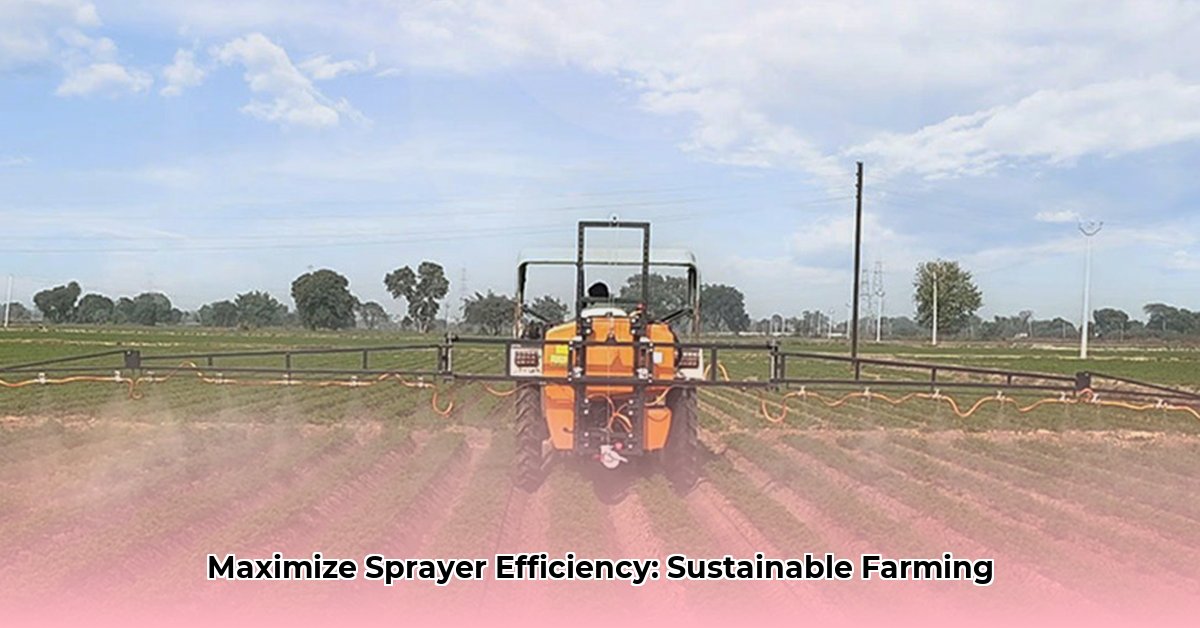
Choosing the right tractor sprayer boom system is crucial for efficient and environmentally responsible farming. This guide offers actionable advice and technical details to help farmers select the optimal system for their needs, regardless of their technical expertise. We'll explore various boom sprayer types, analyze economic and environmental impacts, and discuss future trends. For more in-depth information, visit our detailed guide.
Understanding Tractor Sprayer Boom Types
Selecting a sprayer boom is similar to choosing a vehicle; the right fit depends on your needs. Three main types cater to diverse farming operations:
1. Basic Boom Sprayer Kits: These entry-level systems are affordable and easy to operate, ideal for smaller farms or beginners. They offer improved accuracy over manual spraying, ensuring even chemical distribution. However, they lack the advanced features of more sophisticated systems. Basic kits are the workhorses for many smaller farms needing a reliable, straightforward approach to spraying. Think of them as the reliable pickup trucks of the spraying world.
2. Advanced Variable Rate Application (VRA) Systems: VRA systems represent a significant upgrade, offering precision and efficiency. Utilizing GPS and sensors, they tailor chemical application to specific areas, minimizing waste and optimizing chemical use. Their higher initial cost is often offset by long-term savings from reduced chemical consumption and increased yields. VRA systems are like the smart cars of spraying, adapting to the unique needs of your fields.
3. Drone Spraying Systems: Drone technology provides unparalleled precision, especially in challenging terrains or for hard-to-reach areas. While offering exceptional accuracy and efficiency, the high initial investment and specialized training requirements make them suitable primarily for large-scale operations. Consider drones as the high-tech helicopters of spraying, providing impressive capabilities but requiring a significant investment. They are more suitable for large-scale operations with specialized terrain or crop types.
Choosing the Right System: A Practical Approach
Selecting the optimal system hinges on several factors: farm size, crop types, budget, and environmental concerns. Larger farms with diverse cropping systems will benefit most from VRA systems or drones, while smaller farms might find basic kits sufficient.
Factors to Consider:
Farm Size: Smaller farms may be well-served by basic boom sprayers, while larger operations benefit from the efficiency of VRA systems.
Crop Types: Different crops have unique spraying requirements. Precision application is particularly crucial for high-value crops.
Budget: Basic kits offer the lowest initial investment, while VRA and drone systems demand significantly higher upfront capital.
Environmental Impact: VRA systems typically minimize chemical drift and overall chemical usage, promoting environmental sustainability.
Environmental Impact and Sustainability
Sustainable practices are paramount in modern agriculture. Smart sprayer technology plays a vital role in minimizing environmental impact. Reduced chemical drift protects water sources and surrounding ecosystems, conserving biodiversity and reducing risks associated with chemical exposure. Minimizing chemical use also contributes to cost savings.
Reduced Chemical Drift: Strategic nozzle selection and precision application significantly reduce chemical drift, protecting non-target areas from unwanted exposure.
Optimized Chemical Application: VRA systems ensure only the necessary amount of chemicals are used, resulting in significant material and cost savings.
Economic Considerations: ROI Analysis
While VRA and drone systems require higher upfront investments, their long-term economic benefits are often substantial. Reduced chemical consumption, improved yield, and minimized operational costs contribute to a positive return on investment.
Initial Costs: VRA and drone systems have higher initial costs compared to basic kits. However, their long-term savings potentially outpace the initial outlay.
Operational Costs: Maintenance, fuel consumption, labor requirements, and training costs should be factored into the overall cost-benefit analysis.
Future Trends and Regulations: Staying Ahead of the Curve
Precision agriculture technologies, such as AI-driven spraying systems and autonomous drones, are transforming the industry. These advancements promise further improvements in application accuracy, reducing chemical waste and optimizing resource utilization. Staying informed about evolving regulations and emerging technologies is key to maintaining the efficiency and compliance of farming operations.
AI-Driven Spraying: Artificial intelligence is increasingly integrated into sprayers, enabling more precise application based on real-time data analysis.
Autonomous Drones: Drone technology continues to improve, with autonomous systems offering enhanced spraying capabilities and greater efficiency.
Conclusion: Optimizing Your Spraying Strategy for Success
Choosing a tractor sprayer boom system involves careful consideration of various factors. By assessing your needs, budget, and environmental priorities, you can make an informed decision that aligns with your farming goals and contributes to sustainable agricultural practices. Remember, investing in efficient and environmentally conscious technology is an investment in the long-term success of your farm and the health of the planet.